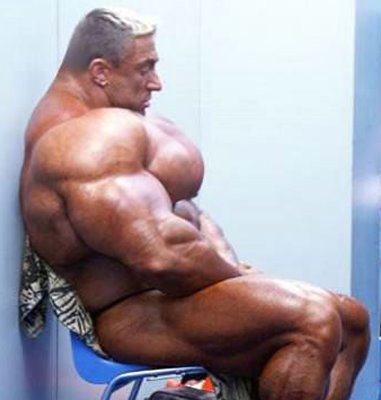 Don R (not his real name), 41, had been an elite amateur bodybuilder, having placed in the top five of his weight class at the NPC National Championships, but he’d had some health problems. Two years ago he walked into a hospital emergency room after experiencing two weeks of symptoms that included abdominal tenderness, nausea, vomiting and intermittent difficulty in catching his breath.
Don R (not his real name), 41, had been an elite amateur bodybuilder, having placed in the top five of his weight class at the NPC National Championships, but he’d had some health problems. Two years ago he walked into a hospital emergency room after experiencing two weeks of symptoms that included abdominal tenderness, nausea, vomiting and intermittent difficulty in catching his breath.
Don told the ER docs that he’d used anabolic steroids until a year before. He also revealed that he’d been diagnosed with cardiomyopathy, or heart-muscle damage, but that the condition had improved. An examination found nothing particularly alarming, with the exception of a grossly enlarged heart; however, athletes are known to have enlarged hearts, since the heart is a muscle and, like all muscles, enlarges when stimulated by exercise.
A year later Don returned to the hospital. His difficulty in breathing at rest had increased, as well as his fatigue. Those symptoms had prevented him from training for the previous four months. Prior to that, Don had trained regularly for 23 years. When questioned by the doctors, He admitted that he’d used testosterone enanthate four years earlier, injecting 250 milligrams into his delts every five days for six weeks. Before contests he’d added a regimen of various diuretics, including Lasix, Aldactone and a thiazide diuretic, to lose excess water. A relative of Don’s told the doctor that Don had understated his actual steroid regimen and that he also used insulin like growth factor 1, the active anabolic factor of growth hormone.
Don’s father had suffered several heart attacks, so there was likely a genetic component in his case. Don had used several heart medications and had been given a special drug-delivery pump that stimulated his heart function.
An examination showed that Don’s heart had severely reduced systolic, or pumping, activity, with the amount of blood pumped indicative of heart failure. The doctors treated that with large amounts of Lasix, which resulted in a dramatic improvement in Don’s condition in a few days. He was discharged from the hospital equipped with a portable defibrillator to prevent sudden death from abnormal heart rhythms. Several days later, however, he returned to the hospital, showing a 14-pound weight gain, fatigue, water retention and severe shortness of breath. All of those point to severe heart failure. He was again aggressively treated, with doctors suggesting that he was a candidate for a heart transplant.
The use of anabolic steroids has been linked to several types of heart problems, including heart attacks and sudden death. On the other hand, those cases are relatively rare considering the number of people estimated to regularly use anabolic steroid drugs. The medical literature shows that steroid-related problems with heart function usually reverse when a person stops using the drugs. As with other drugs, however, the chances of serious complications increase with larger doses taken for longer periods of time. In addition, other drugs often used by competitive bodybuilders—such as thyroid drugs, beta-2 agonists and diuretics—cause far more immediate stress to the heart than anabolic steroids. Nearly all of the cases of sudden death of bodybuilders in the medical literature show that excessive use of diuretics is the culprit, not anabolic steroids.
Simply lifting heavy weights for years will lead to an enlarged heart. Most researchers agree that it’s not a pathological change and is different from the heart enlargement caused by such conditions as high blood pressure and heart failure, in which a weakened heart enlarges to compensate for compromised function.
Isolated animal heart-cell studies show that high doses of anabolic steroids result in the heart cell’s killing itself. Structural studies show that steroids cause detrimental changes in the mitochondria and heart-muscle cells like those seen in heart failure. Harmful changes are not directly due to the steroids themselves but rather to the fact that they inhibit enzymes that break down deoxycorticosterone, a mineralocorticoid released from the adrenal gland that can lead to higher blood pressure and water and sodium retention—all of which can damage the heart.
 The doctors who reported Don’s case suggest that his use of insulinlike growth factor 1 may have worsened his heart condition. That’s paradoxical considering that IGF-1 prevents many of the negative effects of steroids on the heart, such as the self-destruction of heart cells. In fact, IGF-1 is being considered as a treatment for heart failure. On the other hand, IGF-1 does increase the size of internal organs, including the heart.
The doctors who reported Don’s case suggest that his use of insulinlike growth factor 1 may have worsened his heart condition. That’s paradoxical considering that IGF-1 prevents many of the negative effects of steroids on the heart, such as the self-destruction of heart cells. In fact, IGF-1 is being considered as a treatment for heart failure. On the other hand, IGF-1 does increase the size of internal organs, including the heart.
The doctors conjecture that the use of high-dose steroids and IGF-1 may have increased the bodybuilder’s heart growth but without any additional compensation of actual heart function. After his first diagnosis of probable heart failure, the bodybuilder had continued heavy training, which places a strain on the heart’s pumping activity. That further burdened an already compromised heart and may have worsened his problems.
The truth is that there is no clear cause-and-effect relationship between the development of heart failure and the use of anabolic steroids. The isolated effects of high-dose steroid regimens on heart cells do provide a plausible scientific scenario for potential heart failure.1 On the other hand, the heart also has recently been shown to have more regenerative abilities than were previously recognized. Indeed, the heart even has its own built-in diuretic, known as atrial naturetic factor.
Growth Hormone Does Work—With a Caveat
As I’ve discussed in this column several times, the bodybuilding effects of growth hormone are controversial. When adults who are deficient in growth hormone receive it, they gain in lean mass, bone mass and strength and lose bodyfat.
It’s not difficult to understand why GH would have a reputation as a potent anabolic drug, but there’s always a danger when you take the results that occurred in deficient or sick people and apply them to healthy, young athletes. Studies that looked at the results of GH given to young athletes and bodybuilders showed little or no anabolic effects. Those studies have been criticized for various suggested flaws.
For example, the dose of growth hormone used in some studies didn’t resemble what goes on with many real-world athletes. In other cases the subjects may not have been on GH regimens long enough to produce significant gains in muscle and strength. Meanwhile, other studies show that the weight training alone seems to produce more anabolic effects in a young population than GH use does.
So why do athletes continue to use GH? That they do is apparent from the ongoing drug scandals in various sports. Surely it must be doing something.
The truth is that GH is never used alone but always in conjunction with other anabolic drugs, including steroids and insulin. Indeed, research shows that GH and steroids have anabolic effects. That has also been demonstrated in studies with older men, in whom the combination of GH and testosterone proved a superior anabolic agent to either hormone alone.
Another athletic application of GH is often overlooked by the popular media, which characterize GH as a muscle-building agent. GH potently stimulates the production of collagen, the primary structural protein of connective tissue. Translated into real-world practice, using GH may help strengthen tendons and ligaments and speed their healing when they are injured. The GH-induced effect on connective tissue exceeds the healing ability of anabolic steroids.
Many bodybuilders, when asked why they use GH, say that it is a potent fat-burning hormone. In point of fact, GH isn’t a fat-burning hormone but rather helps the body use fat as a source of energy over carbohydrates, the opposite of what normally occurs. In addition, GH potentiates the effects of other hormones, such as epinephrine and norepinephrine, which act as fat mobilizers.
The only drug-tested Mr. Olympia contest took place in Chicago in 1990. I attended that event and interviewed one of the top-five athletes in the contest. I asked him how he managed to beat the drug test that had caught several of the other contestants. He told me off the record that he’d stopped using all anabolic steroids about six weeks prior to the contest but used GH all the way up to the show. There was no way to test for GH use, and he felt that while the GH alone hadn’t added any muscle to his already muscular body, it had enabled him to keep what he’d developed through his training, diet and drug regimen.
It took 18 years for science to confirm the Olympia athlete’s empirical experiment. The study involved 48 men, divided into a control group and a group that used a daily GH dose of 0.058 international units per kilogram of bodyweight for six days.2 That would be considered a high dose. The researchers took various measurements and tests of the men, including strength, power and maximum oxygen intake. There was one catch: All of the men had recently been on anabolic steroid regimens but were now off the drugs completely. In those on the short-term GH regimen, strength, peak power and IGF-1 counts significantly increased, while bodyfat dropped.
When you consider the results of the study, the obvious question is why these men benefited from getting GH alone for only six days when most studies have shown little or no results from GH use. The authors suggest that the men were in a catabolic state, characterized by low counts of anabolic hormones, which were depressed by their recent steroid use. Indeed, they did show low baseline levels of IGF-1, which reflects GH activity in the body. The theory is that after getting off steroids, the men may have had a rebound rise in myostatin, a protein that prevents muscle growth and that is elevated along with cortisol in most catabolic conditions. GH inhibits myostatin production, and the GH used by the men produced a rapid anabolic response by doing just that. What it boils down to is that the subjects were primed to respond to GH, and it provided dramatic anabolic effects in less than a week.
An interesting sidebar on this study is that the researchers employed a GH doping test being proposed for use in sporting events; it was administered 24 hours after the last injection. Of the 24 men, only two failed the doping test, which suggests that the methods of testing for GH in athletes are seriously flawed and explains why there was no GH test during the last Olympic Games—despite numerous threats that there would be.
So it appears that GH may be anabolic under catabolic conditions, even in otherwise healthy athletes. The still unanswered question is just how much GH contributes to a stack that contains anabolic steroids and perhaps insulin. Athletes using that stack certainly are not in a catabolic state, which makes you wonder if GH is adding anything.
by Jerry Brainum
source:www.ironmanmagazine.com
